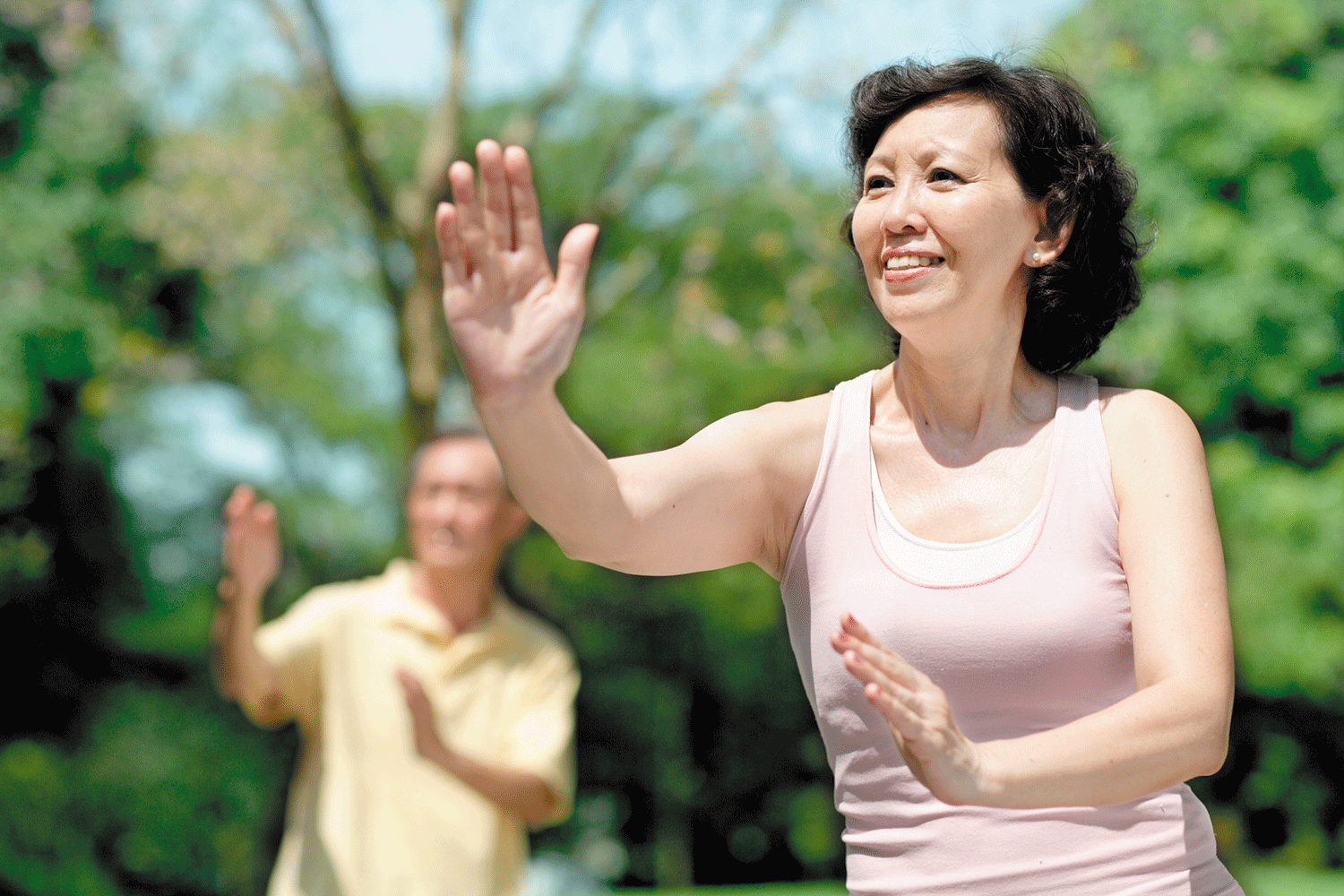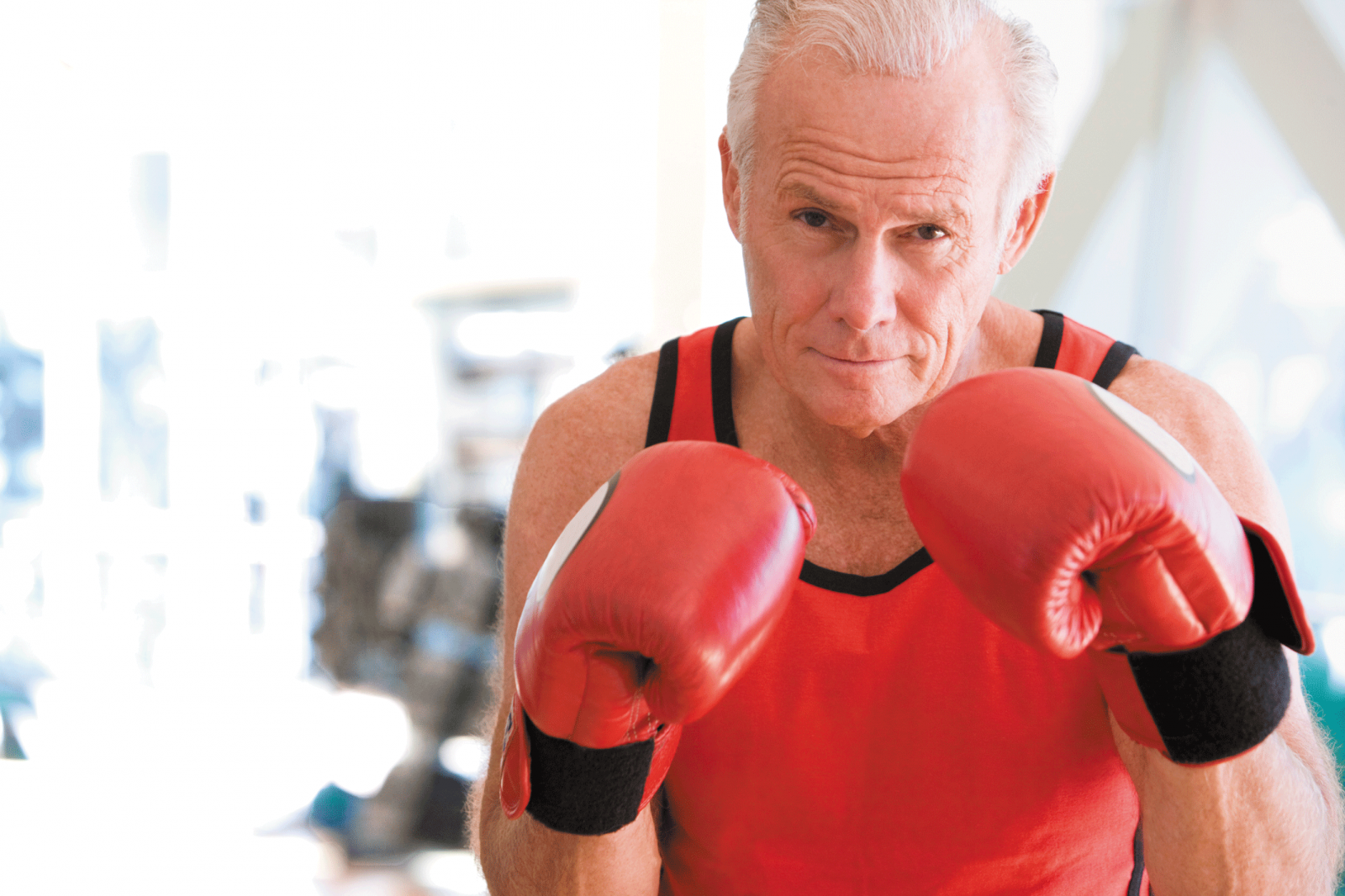
5 timeless habits for better health

What are the symptoms of prostate cancer?

Is your breakfast cereal healthy?

When pain signals an emergency: Symptoms you should never ignore

Does exercise give you energy?

Acupuncture for pain relief: How it works and what to expect

How to avoid jet lag: Tips for staying alert when you travel

Biofeedback therapy: How it works and how it can help relieve pain

Best vitamins and minerals for energy

Should you take probiotics with antibiotics?
Exercise & Fitness Archive
Articles
Why you fall-and what you can do about it
Image: Bigstock
Falling has become a major health issue for many older adults, but there is much you can do to reduce your risk.
When we were kids, falling usually meant a skinned knee or a scraped elbow. But with age, taking a tumble can have graver consequences, including hip fractures and traumatic brain injuries. Each year, one in three seniors falls, and one in five of those falls results in a serious injury.
Study suggests tai chi improves life for people with chronic health problems
Image: Thinkstock
Research we're watching
An analysis published online Sept. 17, 2015, by the British Journal of Sports Medicine suggests that doing tai chi enhances the quality of life for people with common chronic conditions.
Researchers analyzed data from 33 studies involving nearly 1,600 adults. Most were in their 60s or 70s, and all had one or more chronic conditions: osteoarthritis, breast cancer, heart failure, or chronic obstructive pulmonary disease (COPD). All 290 participants in the breast cancer studies were women. There were 452 women (85% of participants) in the arthritis studies, 76 (16%) in the heart failure studies, and 92 (19%) in the COPD studies.
What you can gain by exercising longer and harder
New evidence indicates that more frequent and more vigorous activity can turn back the biological clock.
Fifteen minutes of vigorous exercise or 30 minutes of moderate activity several times a week can reduce your risk of cardiovascular disease, obesity, diabetes, cancer, depression, and dementia. But according to recent studies, exercising even more vigorously for longer periods may have additional benefits by taking years off your biological age. It does so by increasing aerobic capacity—the amount of oxygen you can take in and distribute to your tissues in a minute. "Some studies have indicated that people in their 80s who exercised at high intensity for 20 to 45 minutes a day have an aerobic capacity of people 30 years younger," says Dr. J. Andrew Taylor, director of the cardiovascular research laboratory at Harvard-affiliated Spaulding Rehabilitation Network.
How to banish aches and pains
Gentles tretching adds benefit to your fitness routine, but make sure to warm up first. |
A variety of physical activities and regular stretching can rid you of routine discomfort.
In the journals: Even a little daily exercise is good for healthy aging
|
Guidelines recommend 150 minutes a week of moderate exercise, but an estimated 60% of older Americans fall short. Still, even with a relatively low dose of daily exercise, men and women ages 60 and older were at a 22% lower risk of death over 10 years, according to a study in the British Journal of Sports Medicine (BJSM). The study was observational, however, so although it strongly links exercise to longer life, it can't prove that one causes the other.
Marching orders: How to start a walking program
Walking with a friend or spouse may help you stick to your fitness goals. |
This simple activity is one of the best ways to protect your heart.
Injuries are up among older cyclists
|
Take note if you enjoy going for a bike ride for fun and exercise: the number of injuries and hospital admissions among older bicycle riders has made a startling jump. A study described Sept. 1, 2015, in The Journal of the American Medical Association found that from 1998 to 2013, the number of cyclists ages 45 and older seeking treatment for bicycle-related injuries rose 81%, and the number of hospital admissions among the same group was up 66%. Researchers attribute the numbers to an increase in older bike riders, more street accidents, and sport cycling. If you want to go for a ride, remember to wear a helmet to protect your head; make sure your bike is a good fit, with an inch or two of clearance between you and the cross bar; ride in the bike lane, if available; and wear neon and fluorescent colors or clothing made of reflective material, so you'll be visible to drivers.
Punch up your exercise routine with fitness boxing
Fitness boxing gives you the benefits of a traditional boxing workout without the risks of taking punches or suffering head trauma. |
This adapted version of the sport can help improve your strength, endurance, and balance.
When you think of boxing, you may picture greats like Rocky Marciano duking it out with Jersey Joe Walcott. But boxing isn't just a sport anymore. It's also a popular way to stay fit among older adults, through a version known as fitness boxing. There's no getting into a ring or taking any punches, so there's no risk of head trauma. Instead, fitness boxing has adapted the movements of the sport into exercise routines. "This kind of boxing has many health benefits, because it constantly requires you to think, change your position, and change your posture," says physical therapist Linda Arslanian, director of rehabilitation services at Harvard-affiliated Brigham and Women's hospital.
Should postmenopausal women boost their aerobic exercise time?
Among 400 postmenopausal women who were previously inactive, those who did 300 minutes per week of moderate or high intensity exercise had more success at reducing total fat after one year than those who exercised for 150 minutes per week.
5 tips for getting started with a walking program
Image: Canstock
Looking to get started with an easy and affordable exercise plan? Don't overlook walking. Walking is usually safe for people of any age or level of fitness and can easily be adjusted to a comfortable speed. It doesn't jar joints or raise your heart rate to dangerous levels. For a greater challenge, you can add time, distance, or hills — or try incorporating higher-intensity intervals or resistance bands.
Follow these tips to get the best workout from your walks:

5 timeless habits for better health

What are the symptoms of prostate cancer?

Is your breakfast cereal healthy?

When pain signals an emergency: Symptoms you should never ignore

Does exercise give you energy?

Acupuncture for pain relief: How it works and what to expect

How to avoid jet lag: Tips for staying alert when you travel

Biofeedback therapy: How it works and how it can help relieve pain

Best vitamins and minerals for energy

Should you take probiotics with antibiotics?
Free Healthbeat Signup
Get the latest in health news delivered to your inbox!
Sign Up











